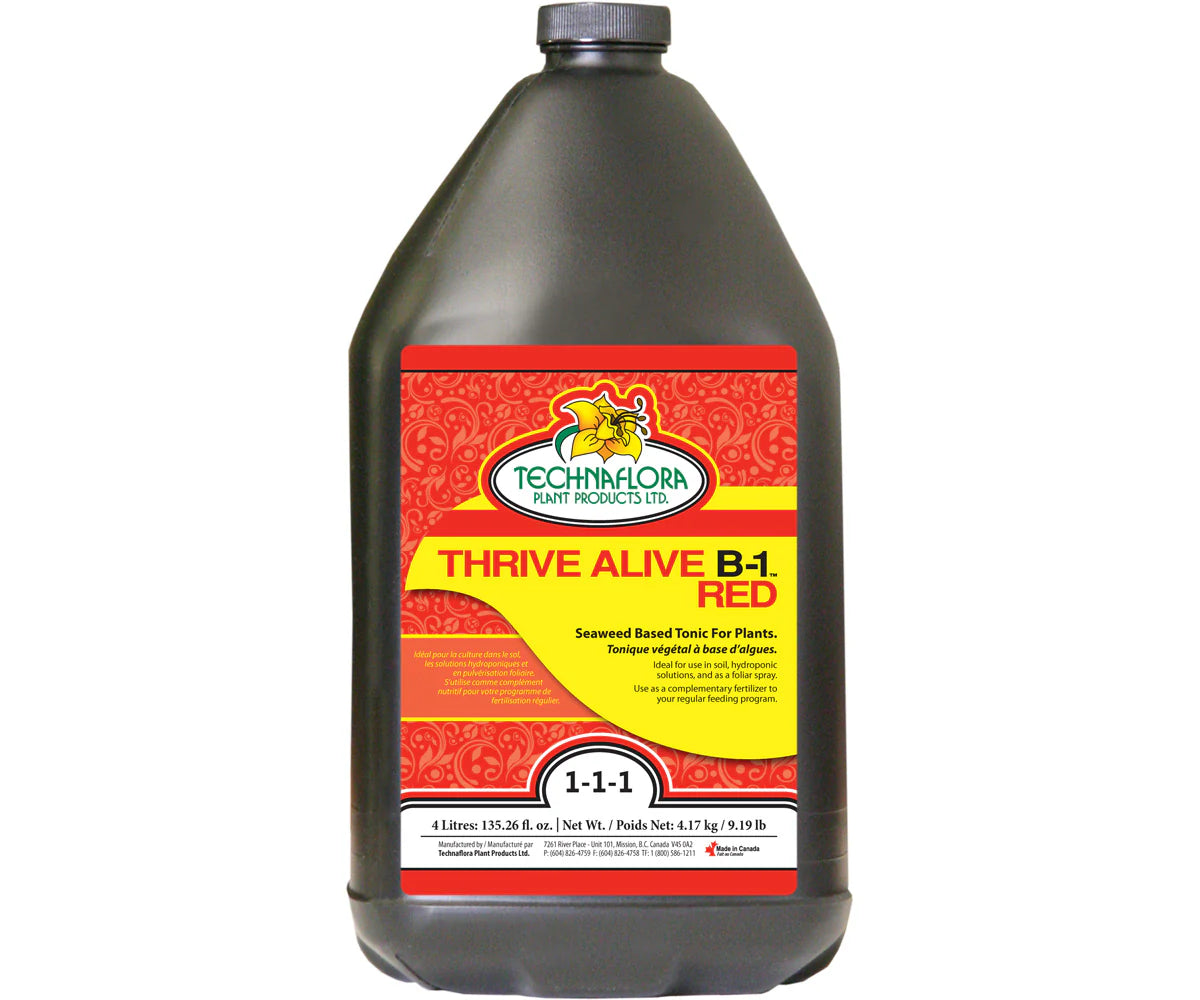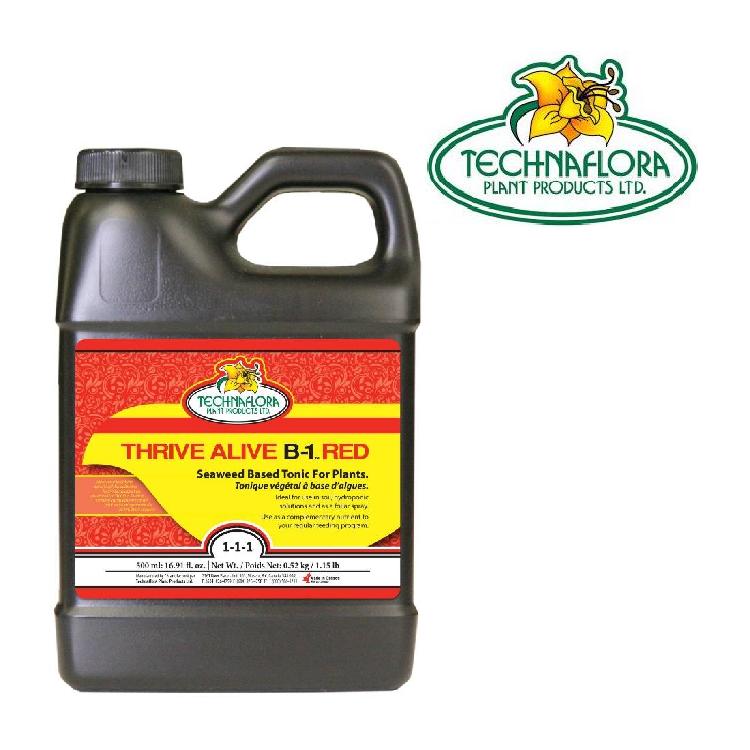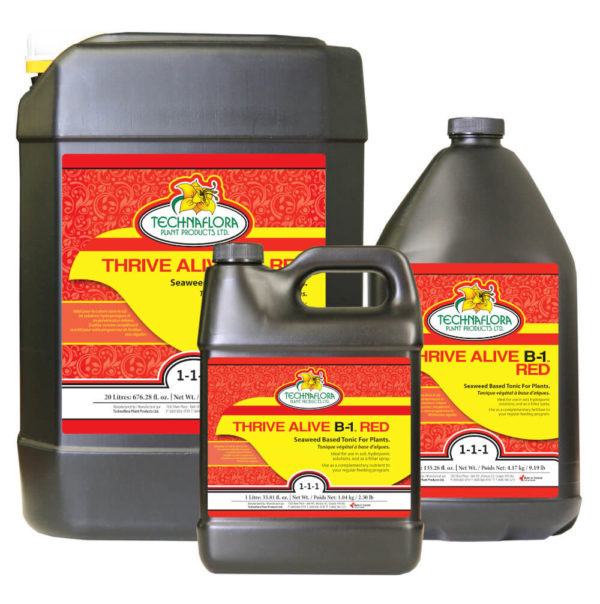Thrive Alive B-1 This blend of organic seaweed and vitamin B1 combine to optimize soil conditions for greater root mass. It can be used as a foliar spray and for root zone This product contains vitamins and nutrients. Which are cultured in premium quality British Columbian sea kelp that will also promote flowering and reduce transplant-related issues.
Ideal for all types of gardening, Thrive Alive B-1™ Red can be used as a soil drench, rejuvenator, or as a foliar spray. As a soil drench, when taking cuttings and in conjunction with Rootech Cloning Gel, Thrive Alive B-1™ will quickly build viable root systems and initiate. When applied as a rejuvenator, Thrive Alive B-1™ Red can be utilized prior to taking cuttings, ensuring healthy mother plants that will continue producing new shoots. When used as a foliar spray throughout the vegetative cycle and into the first week of flowering, it keeps leaves healthy and lush.
Thrive Alive B-1 A seaweed tonic of premium ingredients that can be used in an array of applications
Best used for: Optimizing conditions for plant growth and reducing transplant-related issues
Features and Benefits
- Can be used as a foliar spray and for root zone applications
- Suitable to hydroponic, soil, and soilless gardens
- Facilitates stem, shoot, and root growth
- Does not significantly alter pH levels
- Extremely concentrated
- Used in addition to a regular fertilizing program
Thrive Alive B-1
In 1930 a scientist noticed that vitamin B1 stimulated root growth in a petri dish in the lab. A few more tests and people started becoming convinced that it was the greatest thing since sliced bread. In 1939 Better Homes and Gardens published a report that showed vitamin B1. This resulted in huge rose flowers and giant daffodils among others. The myth was launched and fed on itself; after all if Better Homes and Gardens says it is true – by golly it is true!
By 1942 even the original author of the study admitted that vitamin B1 had no positive effect on plant growth and said “It is now certain, however, that additions of vitamin B1 to intact growing plants have no significant or useful place in horticultural or agricultural practice” But it was too late. The public knew it worked, and manufacturers were selling it like hot cakes






